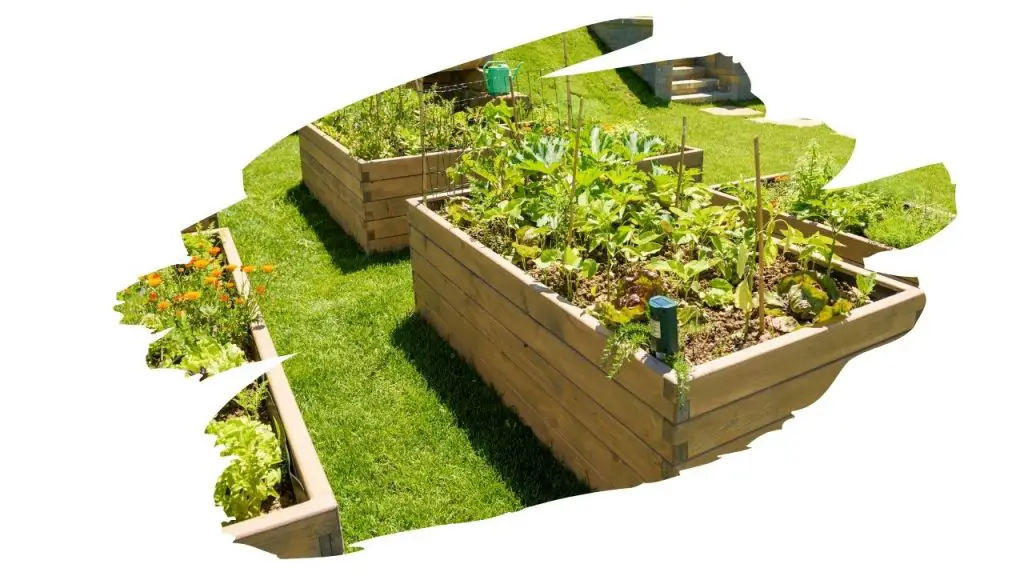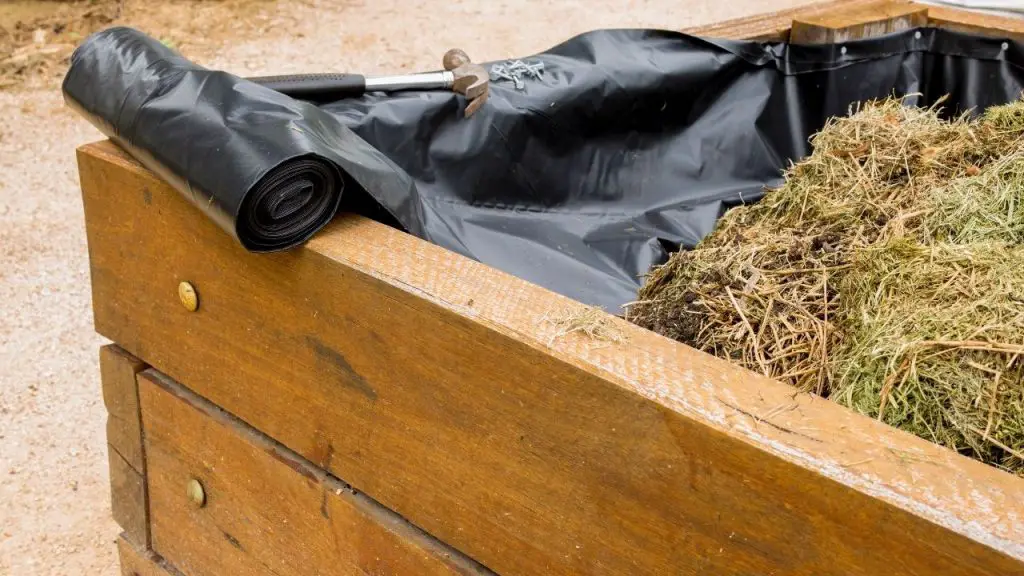Thinking of building a wooden garden bed? Well, you’ve probably thought about adding a stain coat to help give that timber a touch more color.
But what about the chemicals often found in wood stains and finishes? Isn’t there a danger they could leach into the soil and harm your plants?
To put it simply, is that wood stain safe enough to use on your vegetable garden?
Most standard wood stains contain preservative chemicals that can contaminate garden soil and plants. So when applying wood stain to a raised bed structure, make sure you use a water-based eco-friendly wood stain, such as PureColor’s EvenGrain Stain. These wood stain types are non-toxic, low-VOC and solvent-free.
Plus, these human-friendly wood stains are also odorless, so you won’t suffer from fume-inducing headaches when you apply this stuff either.
Still, there is a bit more to treating that vegetable garden than simply applying a stain coat. For example, the type of wood used to make the garden bed matters too.
So keep reading to discover all you need to know to go about safely applying stain to your wood-framed vegetable bed…

This post may contain affiliate links to products that we receive a commission for (at no additional cost to you). Learn more here.
How Do You Stop Wooden Raised Beds From Rotting?
The simplest and safest answer would be to line the inside of the frame with plastic sheeting.
Rather than coating the wood with a stain or sealer, leave the wood untreated. And then use the plastic sheeting to protect the wood from the soil and water.

This won’t protect the wooden bed itself of course (which will weather away without sealant). However, it is the safest way possible to grow your vegetable garden.
Now, if your heart is set on giving that wooden bed a fighting chance at lasting a lifetime, then you will need to seal the wood with a chemical-free top coat.
Wood sealers are used to add a layer of protection around bare lumber. And a quality sealant will make wood more durable and weather proof.
Ideally, just as with wood stain, your wood sealer needs to be eco-friendly too. Using something like Seal It Garden Bed Wood Sealer should do the trick.
This plant safe product bonds to the wood so well it doesn’t slip off and leach into the soil. It can protect almost any wood type for 10+ years. And, best of all, it doesn’t contain metals, sulphate’s, or solvents.
Click here to check out Amazon and find the latest prices for this wood sealer.
Related Post: Is Rotten Wood Good For A Compost Bin? (What To Do With Rotten Wood)
How Long Will Untreated Wood Last In Raised Garden Beds?
Well, if the garden bed is made from lumber that is naturally rot resistant (such as Cedar), then if left untreated it can last up to 20 years.
Otherwise an untreated raised bed made from cheaper less resilient timber can rot away within 5 years.
How Long Does A Treated Wooden Garden Bed Usually Last? If treated every 2 years, then a quality garden bed made from rot-resistant wood can last 20+ years.
What Kind Of Wood Is Safe For A Vegetable Garden?
Cedar wood, specifically untreated Western Red Cedar wood, is the best choice for your vegetable garden.
Cedar is often used in outdoor construction work too. So it’s natural strength will help hold your vegetable bed together for a good long while.
Now, it is worth stressing here that you should avoid using pressure-treated wood – no matter the wood type – in vegetable gardens.
The chemicals inside pressure-treated wood could leach into the soil. And this is a real problem when you consider that some kinds of pressure-treated wood can even contain arsenic!
Related Post: How To Keep Your Landscape Timbers From Ever Warping Again
How Do You Treat Wood Used In A Vegetable Garden?
Rather than treat the wood, (which is a chemical process that involves infusing wood preservatives into the surface grain), you should simply protect the wood.
And how is this done? Well, you do this by using a chemical-free wood sealer.
Related Post: What’s The Simplest Way To Protect Untreated Pine For Raised Beds?
So, Why Should You Stain A Raised Garden Bed?
Well, the whole reason we add stain to wood is to give unappealing wood texture a bit of life and color. And the main aim of stain is to darken wood by giving that wood grain a deeper shade.
So staining isn’t necessary for a raised garden bed, as wood stain alone doesn’t provide the bed any real long-term protective qualities. Only wood sealer best protects wood from mold and mildew, scratches and scrapes.
Related Post: Can You Really Use Untreated Oak For Raised Beds?
What Is The Most Eco Friendly Wood Stain For Garden Beds?
Any wood stain that does away with chemicals and solvents is your best bet.
PureColor’s EvenGrain Stain is water-based, very eco-friendly, and is non-flammable.
Its barely-there odor means you can apply this stain indoors. And it is so effective that just a single coat will get the staining job done.
Also, thanks to its low toxicity, clean up is simple too. Just plain old soap and water will rinse this stain right off your hands.
You can check out Amazon here to find out the latest prices for PureColor’s EvenGrain Stain.
Some Final Thoughts
Honestly, unless your heart is truly set on it, you shouldn’t apply wood stain to a vegetable garden.
If you want to play it safe, simply use untreated wood for the garden bed frame, and line the inside with a plastic sheet.
But, if you really want to give that garden bed a pop of color, then opt for wood stains that are water-based and solvent-free.
Related Post: Should You Use Cinder Blocks (Vs Wood) For Your Raised Bed?

![Will Tacky Wood Stain Eventually Dry? [What To Do When Stain Is Not Drying] will tacky stain eventually dry](https://www.thewoodworkplace.com/wp-content/uploads/2022/10/Banner-502-150x150.jpg)

